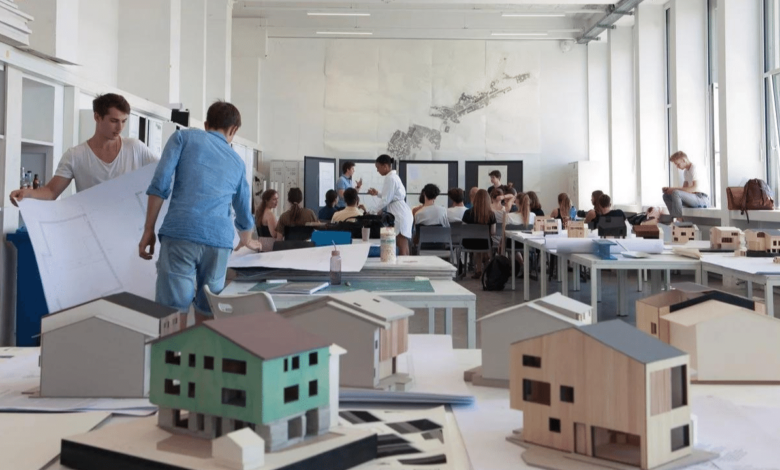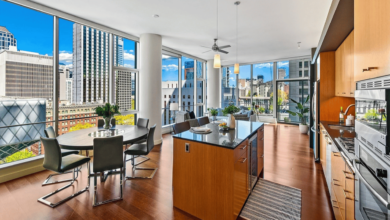Hurbarna: A Comprehensive Guide to Urban Living Solutions

Urban living has evolved significantly in the fast-paced modern world. The need for innovative and sustainable urban solutions has become paramount with the continuous influx of people into cities. One such creative solution is “Hurbarna.” Though yet to be widely recognized, this term encapsulates a concept that combines urban sustainability, smart living, and community-centric design. This article delves deep into the concept of Hurbarna, its significance, and its impact on modern urban living.
What is Hurbarna?
Hurbarna is a term that merges the essence of urban sustainability with intelligent and efficient living. It represents a holistic approach to urban development, emphasizing eco-friendly practices, technological integration, and community well-being. Hurbarna aims to create livable, resilient, and vibrant urban spaces that satisfy current demands without endangering the capacity of future generations to achieve their own.
The Core Principles of Hurbarna
Sustainability
At the heart of Hurbarna is sustainability. This principle involves integrating green technologies, renewable energy sources, and sustainable practices in urban planning and development. From green buildings to energy-efficient transportation systems, sustainability in Hurbarna ensures that urban environments are environmentally friendly and resource-efficient.
Green Buildings
Green buildings are a crucial component of Hurbarna. These structures are designed to minimize environmental impact through energy efficiency, sustainable materials, and innovative waste management systems. Solar panels, rainwater collection systems, and green roofs are standard in green buildings, reducing their carbon footprint and promoting environmental stewardship.
Renewable Energy
Hurbarna advocates using renewable energy sources such as solar, wind, and geothermal. By reducing dependence on fossil fuels, cities can reduce greenhouse gas emissions while supporting international efforts to address climate change. Renewable energy solutions are integrated into the urban infrastructure, sustainably powering homes, businesses, and public spaces.
Smart Living
Smart living is another fundamental principle of Hurbarna. It involves using technology to enhance the quality of life for urban residents. Smart cities leverage data, connectivity, and automation to provide efficient services, improve infrastructure, and foster innovation.
Internet of Things (IoT)
IoT, or the Internet of Things, is essential to intelligent living. IoT sensors and devices gather and process data in real-time, allowing for better management of urban resources. From bright traffic lights that reduce congestion to intelligent waste management systems that optimize collection routes, IoT enhances urban efficiency and convenience.
Smart Homes
Smart homes are an integral part of Hurbarna. Modern technology in these homes automates and regulates several daily functions, including lighting, heating, and security. Smart home systems give residents greater environmental control, improving comfort, safety, and energy efficiency.
Community-Centric Design
Hurbarna emphasizes the importance of community in urban development. Community-centric design creates spaces that encourage sociability, diversity, and inclusion. It involves designing public spaces, residential areas, and business areas that address the various requirements of urban residents.
Mixed-Use Developments
Mixed-use developments are a hallmark of Hurbarna. These developments combine residential, commercial, and recreational spaces in a single area, promoting convenience and reducing the need for long commutes. By bringing people closer to their workplaces, shopping centers, and leisure facilities, mixed-use developments enhance the quality of urban life.
Public Spaces
Public spaces play a crucial role in community-centric design. Parks, plazas, and pedestrian-friendly streets provide social interaction and recreation opportunities. Hurbarna prioritizes creating vibrant public spaces accessible to all, promoting physical activity, mental well-being, and community engagement.
The Benefits of Hurbarna
Environmental Benefits
Hurbarna offers significant environmental benefits. Incorporating sustainable practices and renewable energy sources reduces carbon emissions and minimizes urban areas’ ecological footprint. Waste management, eco-friendly construction, and effective transit strategies contribute to cleaner air and water, conserving natural resources for future generations.
Economic Benefits
The economic benefits of Hurbarna are substantial. Sustainable and intelligent urban solutions attract investment and create job opportunities. Renewable energy projects, green construction, and technology-driven services stimulate economic growth. Additionally, efficient resource management and reduced operational costs lead to long-term financial savings for residents and municipalities.
Social Benefits
Hurbarna enhances social well-being by creating inclusive and vibrant communities. Community-centric design fosters social interaction, inclusivity, and a sense of belonging. Public spaces, mixed-use developments, and intelligent technologies improve the quality of life for urban residents, promoting physical and mental health. Furthermore, sustainable practices ensure that the benefits of metropolitan living are accessible to all, reducing social inequalities.
Challenges and Solutions in Implementing Hurbarna
Challenges
Despite its numerous benefits, implementing Hurbarna poses several challenges. These include high initial costs, technological barriers, and resistance to change. Sustainable and intelligent technologies often require a substantial initial outlay, which may be prohibitive for man cities. Integrating advanced technologies into existing urban infrastructure can also be complex and time-consuming.
Solutions
To overcome these challenges, cities can adopt a phased approach to implementing Hurbarna. This involves prioritizing key projects and gradually integrating sustainable and intelligent solutions. Public-private partnerships can also be crucial in funding and promoting Hurbarna initiatives. Governments can leverage expertise and resources to accelerate urban development by collaborating with private companies. Campaigns for awareness and education are crucial to addressing resistance to change and garnering public support for the Hurbarna projects.
Case Studies: Successful Hurbarna Projects
Masdar City, UAE
Masdar City in the United Arab Emirates is a prime example of Hurbarna. This planned city is designed to be one of the most sustainable urban developments in the world. It features energy-efficient buildings, renewable energy sources, and intelligent technologies. Masdar City aims to be a zero-carbon, zero-waste community, demonstrating Hurbarna’s potential to create a sustainable future.
Songdo International Business District, South Korea
Songdo International Business District in South Korea is another successful Hurbarna project. This intelligent city integrates advanced technologies to enhance urban living. From smart buildings to an extensive network of IoT devices, Songdo exemplifies the principles of wise living. The town also emphasizes sustainability, with green spaces, energy-efficient buildings, and a focus on public transportation.
Copenhagen, Denmark
Copenhagen is well known for its dedication to environmental protection and innovative urban solutions. The city has implemented numerous Hurbarna initiatives, including extensive cycling infrastructure, renewable energy projects, and smart city technologies. Copenhagen’s focus on sustainability and community-centric design has made it one of the most livable cities in the world.
The Future of Hurbarna
The future of Hurbarna looks promising as cities worldwide increasingly recognize the importance of sustainable and innovative urban solutions. Advances in technology, growing environmental awareness, and the need for resilient urban infrastructure drive the adoption of Hurbarna principles. As more cities embrace this concept, we can expect a significant transformation in urban living characterized by sustainability, efficiency, and community well-being.
Technological Innovations
Technological innovations will continue to play a crucial role in the evolution of Hurbarna. From developments in technologies for renewable energy to the proliferation of IoT devices, technology will make cities more habitable, sustainable, and efficient. Smart grids, autonomous vehicles, and artificial intelligence are the only technologies that will influence Hurbarna.
Policy and Governance
Effective policy and governance are essential for the successful implementation of Hurbarna. Governments at all levels must prioritize sustainable and intelligent urban development through supportive policies, incentives, and regulations. Collaboration between public and private sectors and community engagement will drive Hurbarna initiatives forward.
Global Collaboration
Global collaboration is vital for the widespread adoption of Hurbarna principles. Sharing allows cities to learn best practices, technological innovations, and policy frameworks from one another. International organizations and forums can facilitate knowledge exchange and promote collaborative efforts to address common urban challenges.
Conclusion
Hurbarna represents a visionary approach to urban living that prioritizes sustainability, smart living, and community-centric design. By embracing its principles, cities can create vibrant, resilient, and livable urban environments that meet the needs of present and future generations. As we move towards a more sustainable and interconnected world, Hurbarna offers a roadmap for transforming urban living and building a better future for all.
You May Also Read: Home Security Services Near Me Servleader




